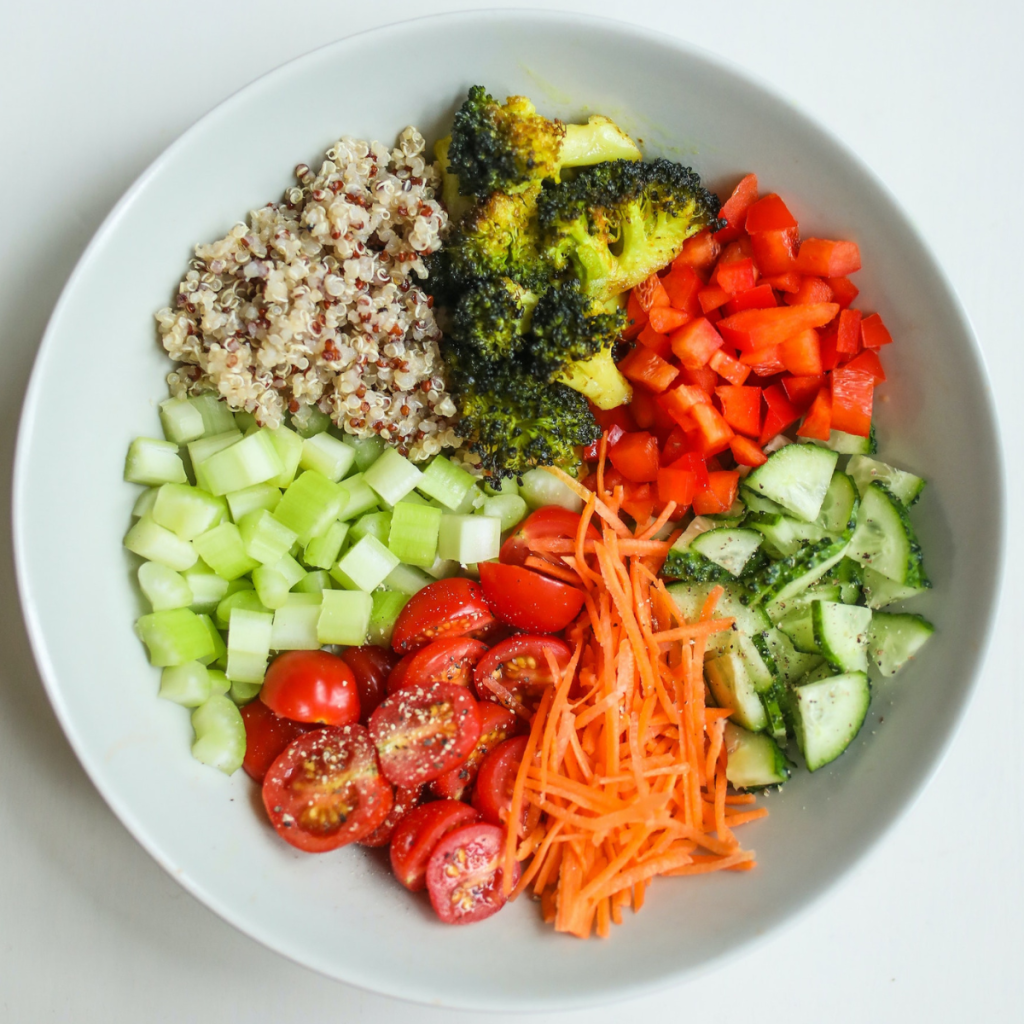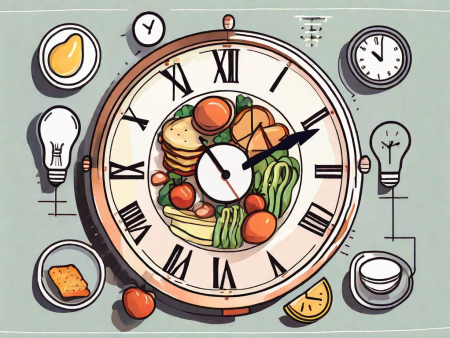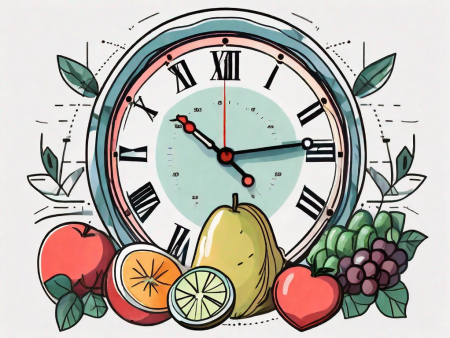Discover the potential benefits of adopting a gluten-free diet for individuals living with chronic pain.
Exploring the Benefits of a Gluten-Free Diet for Chronic Pain Sufferers
Are you tired of dealing with chronic pain day in and day out? Well, I have some exciting news for you – there might be a solution to your woes! It’s time to dive into the world of gluten-free diets and how they could potentially ease your suffering. So, buckle up and get ready to embark on an adventure towards a pain-free life!
Understanding Chronic Pain: Causes and Treatments

Before we delve into the wonders of a gluten-free diet, let’s take a moment to understand the beast that is chronic pain. Chronic pain can have various causes, ranging from injuries to medical conditions like arthritis or fibromyalgia. It can be a debilitating condition that affects millions of people worldwide, impacting their daily lives and overall well-being.
Treating chronic pain is no piece of cake. It often requires a multidisciplinary approach, involving healthcare professionals from various fields such as pain management specialists, physical therapists, and psychologists. Conventional medications, such as nonsteroidal anti-inflammatory drugs (NSAIDs) and opioids, are commonly prescribed to manage pain. However, these medications may not always provide the relief we so desperately seek, and they can come with unwanted side effects and risks.
That’s where exploring alternative options, like diet, comes in handy. While diet alone may not magically cure chronic pain, it can certainly play a role in managing it. Certain foods can trigger inflammation, which in turn can exacerbate pain levels. By identifying and eliminating these pain-inducing culprits from your diet, you may experience some welcomed relief.
The Role of Diet in Managing Chronic Pain
When it comes to managing chronic pain, adopting a holistic approach is key. In addition to medical treatments, lifestyle modifications, including dietary changes, can have a significant impact on pain management. Research has shown that certain diets, such as the Mediterranean diet or an anti-inflammatory diet, can help reduce inflammation and alleviate chronic pain symptoms.
These diets emphasize consuming whole, unprocessed foods rich in antioxidants, omega-3 fatty acids, and other anti-inflammatory compounds. Fruits, vegetables, whole grains, lean proteins, and healthy fats are the cornerstones of these dietary patterns. By incorporating these nutrient-dense foods into your meals, you can provide your body with the necessary tools to combat inflammation and promote overall well-being.
Furthermore, maintaining a healthy weight through a balanced diet can also alleviate chronic pain. Excess weight puts additional stress on joints and can worsen conditions such as arthritis. By adopting a diet that supports weight management, you can reduce the burden on your joints and potentially experience a decrease in pain.
What is a Gluten-Free Diet?
One dietary approach that has gained popularity in recent years for managing chronic pain is the gluten-free diet. Gluten is a protein found in wheat, barley, and rye. Believe it or not, it’s lurking in many common foods, like bread, pasta, and even some unsuspecting sauces. For individuals with gluten sensitivity or celiac disease, consuming gluten can trigger an immune response and lead to various symptoms, including joint pain and inflammation.
A gluten-free diet involves cutting out these gluten-loaded goodies and replacing them with alternative options. Sounds simple, right? Well, not so fast. Transitioning to a gluten-free lifestyle comes with its fair share of challenges. It requires careful label reading, meal planning, and finding suitable gluten-free substitutes for your favorite foods. However, for individuals who experience relief from chronic pain symptoms by eliminating gluten, the effort can be well worth it.
It’s important to note that not everyone with chronic pain needs to follow a gluten-free diet. Gluten sensitivity and celiac disease are specific conditions that require the avoidance of gluten. If you suspect that gluten may be contributing to your chronic pain, it’s best to consult with a healthcare professional or a registered dietitian who can guide you through the process of determining if a gluten-free diet is right for you.
The Connection Between Gluten and Inflammation
Now, let’s unravel the intriguing relationship between gluten and inflammation. You see, gluten can trigger inflammatory responses in some individuals, particularly those with certain autoimmune diseases. It’s almost like a love-hate relationship, but instead of love, it’s inflammation. Sneaky, right?
But what exactly happens when gluten enters the picture? How does it manage to wreak havoc on our bodies? Let’s dive deeper into the fascinating world of gluten and its inflammatory effects.
How Gluten Triggers Inflammatory Responses
When sensitive individuals consume gluten, their immune system goes haywire, mistakenly attacking the gluten and causing inflammation. It’s like a case of mistaken identity, where the immune system sees gluten as a dangerous invader and launches a full-scale attack.
As this battle unfolds, inflammation sets in, affecting various parts of the body. This inflammatory response can lead to increased pain, joint stiffness, and overall discomfort. It’s as if the body is caught in a never-ending cycle of defense, causing distress and hindering daily activities.
But why does this happen to some individuals and not others? Well, it all comes down to genetics and the unique way our immune systems are wired. For those with a genetic predisposition to autoimmune diseases, such as rheumatoid arthritis or lupus, the presence of gluten can act as a trigger, igniting an inflammatory cascade.
So, what’s the solution to this gluten-induced inflammation? Bid adieu to gluten, of course! By eliminating gluten from the diet, individuals with gluten sensitivity or autoimmune diseases can potentially bid adieu to some of that pesky inflammation.

Gluten and Autoimmune Diseases
Did you know that gluten is known to be a trigger for autoimmune diseases like celiac disease? That’s right – for those with celiac disease, consuming gluten can lead to an immune response that damages the small intestine and causes all sorts of digestive distress.
Celiac disease is an autoimmune disorder where the body’s immune system mistakenly attacks the lining of the small intestine when gluten is present. This immune response can lead to a range of symptoms, including abdominal pain, bloating, diarrhea, and even malnutrition if left untreated.
By adhering to a gluten-free diet, individuals with celiac disease can alleviate symptoms and prevent long-term complications. It’s not just a matter of preference or a trendy diet; it’s a necessary lifestyle change to protect their health and well-being.
But celiac disease is not the only autoimmune condition associated with gluten. Other autoimmune diseases, such as Hashimoto’s thyroiditis and type 1 diabetes, have also been linked to gluten sensitivity. In these cases, gluten can contribute to the immune system’s attack on specific organs or tissues, leading to chronic inflammation and potential complications.
Understanding the connection between gluten and autoimmune diseases is crucial for those affected. It empowers individuals to make informed choices about their diet and take control of their health.
So, whether you have celiac disease, gluten sensitivity, or an autoimmune condition, being mindful of gluten’s inflammatory effects can make a significant difference in your overall well-being. By embracing a gluten-free lifestyle, you can reduce inflammation, alleviate symptoms, and pave the way for a healthier future.
Transitioning to a Gluten-Free Diet
Transitioning to a gluten-free diet can be a challenging yet rewarding journey. It requires a bit of detective work, a willingness to explore new flavors, and a dash of creativity. But fear not! With the right knowledge and resources, you can make a smooth transition without losing your mind or your taste buds.
Identifying Gluten in Your Diet
The first step in your gluten-free adventure is to become a gluten detective. Gluten can be sneaky and likes to hide in unexpected places. It’s essential to scrutinize food labels and familiarize yourself with the various names for gluten-containing ingredients. Bid farewell to your beloved wheat-based products and embrace a new world of gluten-free alternatives.
But don’t worry, you won’t be left empty-handed. There is a wide range of gluten-free products available in grocery stores and online. From gluten-free flours to bread, pasta, and even beer, you’ll find plenty of options to satisfy your cravings.
Additionally, it’s crucial to be aware of cross-contamination. Even if a product is labeled gluten-free, it may have come into contact with gluten during manufacturing or preparation. Learning how to navigate potential cross-contamination risks will ensure your gluten-free journey remains on track.
Gluten-Free Substitutes for Common Foods
Now comes the fun part – finding gluten-free substitutes for all your favorite foods! Trust me; there are plenty of options out there that will make your taste buds sing with joy. The gluten-free world is a treasure trove of delicious possibilities waiting to be explored.
Let’s start with bread. Gluten-free bread has come a long way in recent years. You’ll find a variety of options made from alternative flours like rice, corn, or tapioca. These breads can be just as fluffy and satisfying as their gluten-filled counterparts. Toast it, make sandwiches, or use it as a base for mouthwatering French toast.
Pasta lovers, rejoice! Gluten-free pasta is widely available and comes in various shapes and sizes. Whether you prefer spaghetti, penne, or lasagna, there’s a gluten-free option for you. Pair it with your favorite sauce and toppings, and you won’t even miss the gluten.
And let’s not forget about desserts. Gluten-free baking has become a culinary art form. Indulge in decadent chocolate cakes, chewy cookies, and flaky pie crusts – all without a trace of gluten. With a bit of experimentation and the right gluten-free flour blends, you can create desserts that rival any traditional recipe.
But it’s not just about finding substitutes. Embracing a gluten-free diet opens doors to new and exciting flavors. Explore the world of ancient grains like quinoa, amaranth, and buckwheat. Discover the rich textures and nutty flavors they bring to your meals. Experiment with international cuisines that naturally incorporate gluten-free ingredients, such as Mexican corn tortillas or Indian rice dishes.
Remember, transitioning to a gluten-free diet is a personal journey. It may take time to adjust, but with an open mind and a willingness to explore, you’ll find that gluten-free living can be delicious, satisfying, and even adventurous.
Potential Benefits of a Gluten-Free Diet for Chronic Pain Sufferers
Alright, by now, you’re probably wondering if all this gluten-free hoopla is worth it. Let’s uncover some potential benefits that might entice you to give it a go.
Reduced Inflammation and Pain
One of the most exciting benefits chronic pain sufferers might experience by going gluten-free is a reduction in inflammation and, consequently, a reduction in pain levels. Imagine waking up in the morning with a spring in your step instead of feeling like the Tin Man from “The Wizard of Oz.” It’s a game-changer, my friend.
Improved Gut Health and Digestion
The gut is often the epicenter of many health issues, including chronic pain. By eliminating gluten from your diet, you might improve your gut health, leading to better digestion and overall well-being. Say goodbye to bloating and discomfort – it’s time to embrace a happier tummy.
Challenges and Considerations of a Gluten-Free Diet
Now, before you embark on this gluten-free adventure, it’s essential to be aware of the challenges and considerations that come with it.
Nutritional Deficiencies to Watch Out For
Eliminating gluten from your diet can inadvertently lead to nutritional deficiencies if you’re not careful. Gluten-containing foods often provide essential nutrients like fiber, B vitamins, and iron. As you transition to a gluten-free lifestyle, make sure to include alternative sources of these nutrients to ensure your body remains in tip-top shape.
The Importance of a Balanced Gluten-Free Diet
While it may be tempting to gorge on all the gluten-free snacks and treats out there, it’s crucial to maintain a balanced diet. Don’t let the gluten-free label fool you into thinking something is automatically healthy. It’s all about finding a balance and incorporating a variety of nutrient-dense foods into your daily routine.
Well, my friend, there you have it – an exploration into the world of gluten-free diets and their potential benefits for chronic pain sufferers. Remember, this journey is yours to take, and before making any dietary changes, it’s always a good idea to consult with a healthcare professional. So, go forth and venture into the world of gluten-free possibilities – your pain-free future awaits!







